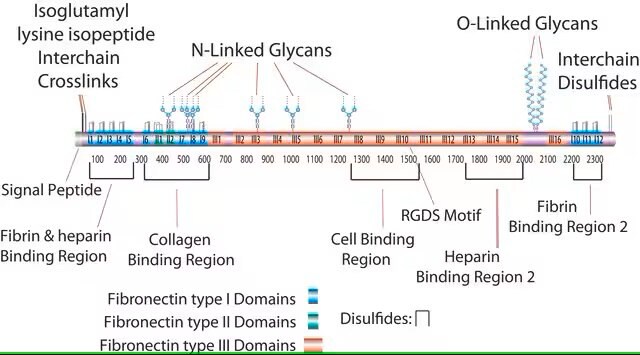The concentration of this product is 1 mg/mL. This information is reported in the product Certificate of Analysis. Please see the link below to review a sample or lot-specific Certificate:
https://www.sigmaaldrich.com/product/sigma/f1141#product-documentation
F1141
Bovine Fibronectin
from bovine plasma, liquid, suitable for cell culture
Sinónimos:
Fibronectina
About This Item
Productos recomendados
Nombre del producto
Fibronectina plasma bovino, solution, sterile-filtered, BioReagent, suitable for cell culture
biological source
bovine plasma
Quality Level
sterility
sterile-filtered
product line
BioReagent
form
solution
packaging
pkg of 1 mg
pkg of 2 mg
pkg of 5 mg
technique(s)
cell culture | mammalian: suitable
surface coverage
1‑5 μg/cm2
UniProt accession no.
binding specificity
Peptide Source: Collagen
Peptide Source: Fibrinogen
shipped in
wet ice
storage temp.
2-8°C
Gene Information
bovine ... FN1(280794)
¿Está buscando productos similares? Visita Guía de comparación de productos
General description
Application
Biochem/physiol Actions
Analysis Note
Other Notes
Optional
signalword
Danger
hcodes
Hazard Classifications
Resp. Sens. 1 - Skin Sens. 1
Storage Class
12 - Non Combustible Liquids
wgk_germany
WGK 3
flash_point_f
Not applicable
flash_point_c
Not applicable
ppe
Eyeshields, Gloves
Elija entre una de las versiones más recientes:
Certificados de análisis (COA)
¿No ve la versión correcta?
Si necesita una versión concreta, puede buscar un certificado específico por el número de lote.
¿Ya tiene este producto?
Encuentre la documentación para los productos que ha comprado recientemente en la Biblioteca de documentos.
Los clientes también vieron
Artículos
Fibronectin (FN) plays crucial roles in extracellular matrix fibril assembly and cellular interactions.
The extracellular matrix (ECM) and its attachment factor components are discussed in this article in relation to their function in structural biology and their availability for in vitro applications.
The extracellular matrix (ECM) is secreted by cells and surrounds them in tissues.
3D cell culture overview. Learn about 2D vs 3D cell culture, advantages of 3D cell culture, and techniques available to develop 3D cell models
Protocolos
Dilute fibronectin for cell attachment, varying per cell type. Coating protocol, products, and FAQs provided.
Contenido relacionado
Cell culture media expertise accelerates lab-grown meat and seafood industry with animal-free formulations.
-
Hi, I bought a vial with 5mg of Fibronectin (F1141), but so far, I have not been able to find the concentration of this solution. Can you please help me with this info? Thanks a lot in advance!
1 answer-
Helpful?
-
-
What is the procedure for coating culture surfaces with fibronectin?
1 answer-
To coat culture surfaces: 1. Dilute fibronectin in sterile balanced salt solution and coat the culture surface (1-5 μg/cm2) with a minimal volume. 2. Allow to air dry for at least 45 minutes at room temperature. Excess fibronectin may be removed by aspiration, but this is not necessary.
Helpful?
-
-
How long can I store the fibronectin solution?
1 answer-
The product is good for at least a year at 2-8 °C if kept sterile.
Helpful?
-
-
How do I choose which fibronectin product to use to coat culture surfaces for cell growth?
1 answer-
The species source for the fibronectin used when coating culture surfaces is not important. It is the presence of the RGD binding site that is present in all fibronectins that promotes binding.
Helpful?
-
-
How long can I store fibronectin coated plates, etc?
1 answer-
Fibronectin coated cultureware can be stored for 2-4 weeks at 2-8 °C in a closed sterile container, or in sterile sealable bags.
Helpful?
-
-
What is the Department of Transportation shipping information for this product?
1 answer-
Transportation information can be found in Section 14 of the product's (M)SDS.To access the shipping information for this material, use the link on the product detail page for the product.
Helpful?
-
Active Filters
Nuestro equipo de científicos tiene experiencia en todas las áreas de investigación: Ciencias de la vida, Ciencia de los materiales, Síntesis química, Cromatografía, Analítica y muchas otras.
Póngase en contacto con el Servicio técnico










